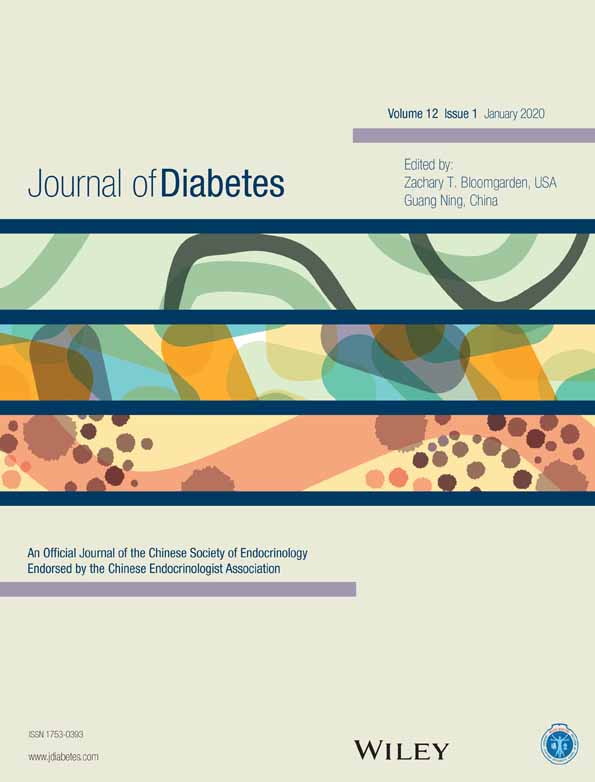Treatment of glycemic control in diabetes in the CVOT era
CVOT时代糖尿病患者的降糖治疗
Therapy of glycemia in the era of cardiovascular outcome trials (CVOTs) is still concerned with and driven by glycemic control—at least for now. Elevated glucose, primarily documented by glycosylated hemoglobin (A1c), remains the reason to initiate medications for diabetes and to escalate intensity of treatment. After all, the drugs were initially approved by the Food and Drug Administration (FDA) for treatment of diabetes, which has been defined by hyperglycemia, and any other use was, strictly speaking, off-label.
However, the results of the CVOTs have turned clinical thinking and labelling on their heads. There are suggestions to lead therapy with medications that have been proven to confer cardiorenal benefits in those patients with established cardiorenal disease or at high risk for cardiorenal disease, and place glycemic concerns as secondary. Drugs have been further segregated into those with proven heart failure and renal benefits (sodium glucose cotransporter 2 [SGLT2]-inhibitors) and atherosclerotic cardiovascular disease (glucagon-like peptide 1 receptor agonists [GLP1-RAs]). Importantly, the definition of which patients have established cardiovascular and renal disease or risk is left to the clinician, not defined by the FDA or even the guidelines.
Additional challenges to the traditional glycemic control algorithm include whether metformin should always be first, whether dual or triple therapy should be used from the outset, and whether SGLT2-inhibitors and/or GLP1-RAs should be used first and/or always and/or together for all of those with cardiorenal risk independent of glycemic control parameters.
Basically, the CVOTs are upending the traditional model of focusing the diabetes treatment algorithm on control of A1c one medication at a time. And the discussion is also enriched by challenges to A1c itself as the main guide to therapy. The CVOTs force us to look at targets we do not yet fully understand that may protect the heart and kidneys, and by extension other organ systems such as the brain, liver, etc. And it remains to be seen whether lessons learned from people with diabetes will apply to those who do not have diabetes.
CONFLICT OF INTEREST
The author has served as a consultant, clinical researcher and speaker for Eli Lilly, Novo Nordisk, Janssen, Sanofi, Aztra Zeneca, and Boehringer Ingelheim.
心血管结局试验(cardiovascular outcome trials, CVOTs)时代的降糖治疗仍然需要关注血糖控制并且受血糖控制的影响——至少目前是这样。血糖升高[主要以糖化血红蛋白(A1c)为依据]仍然是启动糖尿病药物治疗和增加治疗强度的原因。毕竟, 这些药物最初是被美国食品与药品监督管理局(the Food and Drug Administration, FDA)批准用于治疗糖尿病的, 而糖尿病的定义是高血糖症, 因此严格来说, 任何其他用途都是超出说明书用途的。
然而, CVOTs的结果改变了我们的临床思维以及药品说明书上的说明。有人建议, 在已确诊心肾疾病患者或有心肾疾病高危风险的患者中, 应使用已被证实可带来心肾获益的药物进行主要治疗, 并将对血糖的关注作为次要问题。这些药物被进一步分为已证实有心力衰竭与肾脏获益的药物[钠-葡萄糖协同转运蛋白2(sodium glucose cotransporter 2, SGLT2)-抑制剂]和有益于动脉粥样硬化性心血管疾病的药物[胰高血糖素样肽1受体激动剂(glucagon-like peptide 1 receptor agonists, GLP1-RAs)]。重要的是, 是由临床医生, 而不是FDA, 甚或不是由指南来定义哪些患者具有明确的心血管与肾脏疾病或风险的。
传统血糖控制策略面临的其他挑战包括:二甲双胍是否应该始终处于第一位, 是否应从一开始就使用二联或三联疗法, 以及对于所有具有心肾疾病风险的患者, 无论其血糖控制如何, 是否均应该首先和/或始终和/或联合使用SGLT2-抑制剂和/或GLP1-RA。
总的来说, CVOTs正在颠覆传统的治疗模式, 亦即将糖尿病治疗策略的重点放在一次使用一种药物来控制A1c上。同时, 由于挑战既往将A1c本身作为主要治疗目标而使讨论内容增加。CVOTs迫使我们去考虑那些我们尚未完全了解而可能保护心脏和肾脏的靶点, 并由此延伸到其他器官系统, 如大脑、肝脏等。目前还有待观察的是, 从糖尿病患者身上获取的经验教训是否也适用于无糖尿病的患者。




